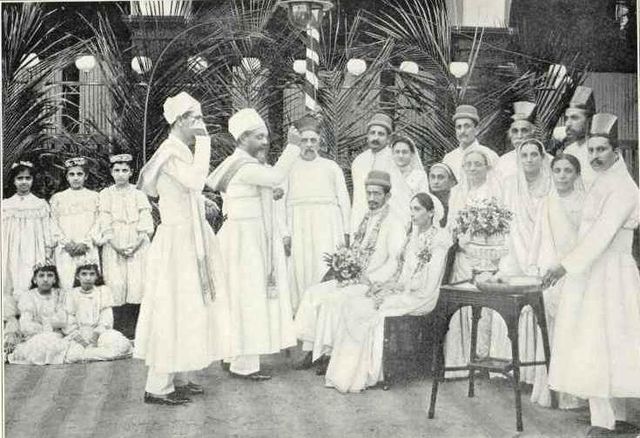Avestan is an umbrella term for two Old Iranian languages, Old Avestan and Younger Avestan. They are known only from their conjoined use as the scriptural language of Zoroastrianism; the Avesta serves as their namesake. Both are early Eastern Iranian languages within the Indo-Iranian language branch of the Indo-European language family. Its immediate ancestor was the Proto-Iranian language, a sister language to the Proto-Indo-Aryan language, with both having developed from the earlier Proto-Indo-Iranian language; as such, Old Avestan is quite close in both grammar and lexicon to Vedic Sanskrit, the oldest preserved Indo-Aryan language.
Yasna 28.1, Ahunavaiti Gatha (Bodleian MS J2)
Image: Bodleian J2 fol 175 Y 28 1
Zoroastrianism, also known as Mazdayasna and Behdin, is an Iranian religion. One of the world's oldest organized faiths, it is based on the teachings of the Avesta and the Iranian prophet Zoroaster. Zoroastrians exalt an uncreated and benevolent deity of wisdom, commonly referred to as "Ahura Mazda", as the universe's supreme being; opposed to Ahura Mazda is "Angra Mainyu", who is personified as a destructive spirit and the adversary of all things good. Zoroastranism combines a dualistic cosmology of good and evil with an eschatology predicting the ultimate triumph of Ahura Mazda over evil. Opinions vary among scholars as to whether Zoroastrianism is monotheistic, polytheistic, or henotheistic. Some assert that it combines elements of all three.
Atash Behram at the Fire Temple of Yazd in Iran
A Parsi Wedding, 1905
An 8th century Tang dynasty Chinese clay figurine of a Sogdian man wearing a distinctive cap and face veil, possibly a camel rider or even a Zoroastrian priest engaging in a ritual at a fire temple, since face veils were used to avoid contaminating the holy fire with breath or saliva; Museum of Oriental Art (Turin), Italy.
Ossuary with reliefs of Zoroastrian priests attending a fire, Mullakurgan (near Samarkand), Uzbekistan, 7–8th century CE.





